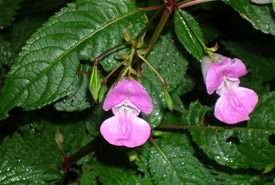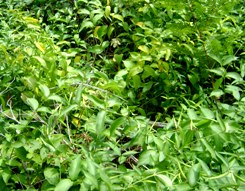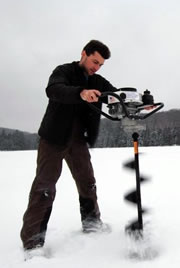Can battling invasive species be a mistake? (Part One)

Himalayan balsam (Photo by Keith Williamson)
As a conservation organization, the Nature Conservancy of Canada spends a considerable amount of time and resources controlling invasive species. In some ways, this seems contradictory. Why would an organization tasked with conserving the natural world actively kill plants and animals? After all, the idea of a species as non-native or invasive is fundamentally a human construct; in fact biology that studies invasive species has been criticized as a value-based science rather than an objective field.1
Species have always dispersed and colonized new habitats, and ecosystems have evolved the capacity to buffer the arrival of new species on occasion, resisting their establishment or integrating them without fundamentally changing. So what makes a species that piggybacked on humans different from one that found a new place to live by floating on the winds or sailing the seas?
One major difference is the rate at which humans are now transferring species, coupled with how we have changed the environments that receive these species. This transfer rate far exceeds natural dispersal rates. Humans have fundamentally changed many ecosystems, making them less hospitable for specialist native species. We have also reduced the abundance of many native species through harvest or other stresses. The altered conditions are often ideal for invasive species, and the loss of native species means that invaders face less competition.
This is leading to a major form of global change2 known as biotic homogenization: the global biological community is becoming rapidly similar, with a small number of generalist species replacing many unique species and communities that evolved in isolation over thousands to millions of years. In some places, non-native species have taken over and are now in the majority.
This is a major global event on par with habitat loss and climate change. But while habitats can be restored, and greenhouse gasses can be sequestered, there are few situations where introduced species can be eradicated outright. In most cases, we must simply accept their presence or at best attempt to control them. For example, we spend millions each year to control non-native sea lamprey in the Great Lakes, with no expectation of ever eliminating them.

Dog-strangling vine (Photo by Couchiching Conservancy)
In many cases, non-native species have integrated without apparent effects on local ecosystems. This has led some to downplay the threat posed by non-native species, suggesting that most are harmless and viewing this phenomenon as a simple extension of the natural dispersal process.3,4,5
Reviews on the effects of non-native species have even led to the development of a theory called the "Tens Rule." 6,7 This rule proposes that, of all species that are transported, only 10 per cent establish reproducing populations and only 10 per cent of these have any meaningful effects. By this rule, only one per cent of species transported outside of their native range would be problematic, and this rationale is often used to diminish the threat posed by non-native species.
So why be concerned? More importantly, why spend limited conservation resources killing species that have limited negative consequences when there are so many other threats to native ecosystems?
References
1. Simberloff, D., & Vitule, J. R. (2014). A call for an end to calls for the end of invasion biology. Oikos, 123, 408-413.
2. Ricciardi, A. (2007). Are modern biological invasions an unprecedented form of global change? Conservation Biology, 21, 329-336.
3. Gozlan, R. E. (2008). Introduction of non‐native freshwater fish: is it all bad? Fish and Fisheries, 9, 106-115.
4. Schlaepfer, M. A., Sax, D. F., & Olden, J. D. (2011). The potential conservation value of non‐native species. Conservation Biology, 25, 428-437.
5. Thompson, K. (2014). Where Do Camels Belong? The Story and Science of Invasive Species. Profile Books Ltd. London, UK.
6. Williamson. M., & Fitter, A. (1996). The varying success of invaders. Ecology, 77, 1661–1666.
7. Lapointe, N. W. R., Pendleton, R. M., & Angermeier, P. L. (2012). A comparison of approaches for estimating relative impacts of nonnative fishes. Environmental management, 49, 82-95.


